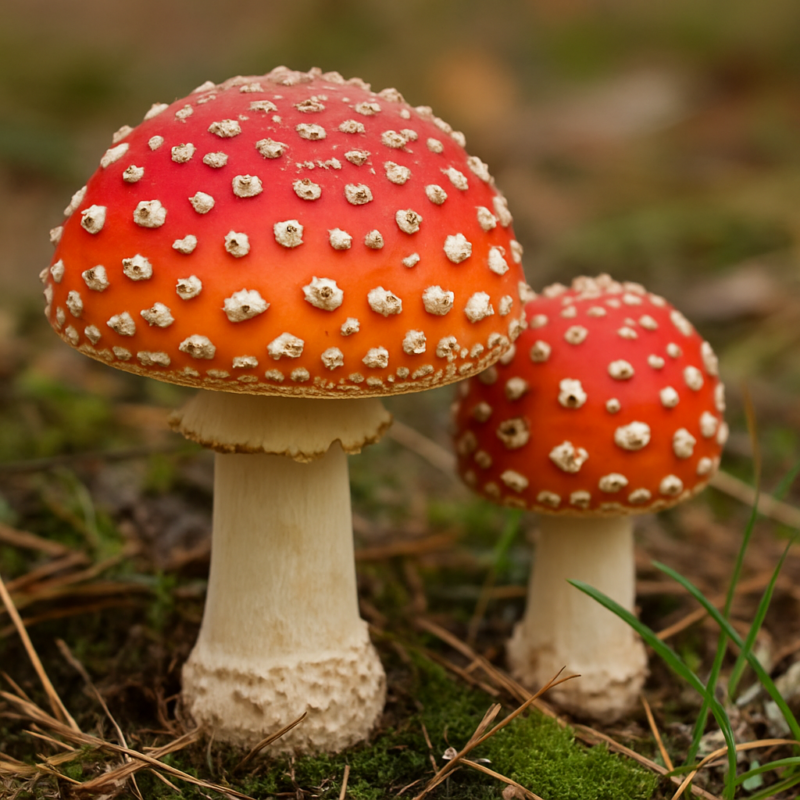
Introduction
In the ever-expanding world of alternative wellness and recreational products, a surprising newcomer has captured public interest: Amanita muscaria mushrooms. With their unmistakable red caps and white spots, these iconic fungi are often associated with fairy tales and folklore—but now they’re showing up in gummies, tinctures, and teas. Unlike psilocybin mushrooms, Amanita muscaria is legal in most of the U.S., sparking both fascination and controversy.
In this opinion piece, we explore the complex reality behind the so-called “legal high,” separating hype from science, and asking whether Amanita mushrooms truly represent a breakthrough in natural wellness—or just a loophole in regulation.
1. A Different Kind of Mushroom
When most people hear the term “magic mushrooms,” they think of psilocybin, the compound responsible for classic psychedelic experiences. Amanita muscaria mushrooms, however, don’t contain psilocybin at all. Their psychoactive effects come from two lesser-known compounds: muscimol and ibotenic acid. The effects are often described as dreamlike, dissociative, or sedative rather than the visual distortions and intense introspection associated with psilocybin.
Because Amanita doesn’t fall under the same Schedule I classification as psilocybin, it remains legal to sell and consume in most U.S. states. That technicality has opened the door for brands to market Amanita-based products widely—especially online and in wellness stores that previously couldn’t touch anything remotely psychedelic.
2. Legal but Not Uncontroversial
The legality of Amanita muscaria doesn’t mean it’s free from concern. While it’s less restricted than psilocybin, that freedom brings up a crucial issue: lack of oversight. There are currently no standardized regulations for Amanita mushroom harvesting, dosing, or labeling. Some wellness brands test for potency and toxins, but many do not, leaving consumers to navigate a very unregulated market.
There’s also the question of safety. While Amanita muscaria is not considered highly toxic in small amounts, high doses can cause nausea, disorientation, and confusion. The line between “therapeutic” and “unpleasant” is thin—and depends heavily on how the mushroom is processed. Raw Amanita is significantly more toxic than dried, decarboxylated versions, but many consumers don’t know the difference.
3. A Cultural Reawakening?
Despite the risks, proponents argue that the renewed interest in Amanita mushrooms is part of a broader psychedelic renaissance—a cultural shift where people are seeking non-pharmaceutical alternatives for mental wellness, sleep support, and emotional regulation.
Historically, Amanita has been used by Siberian shamans, Viking warriors, and indigenous tribes, not for entertainment but for ritual and healing. While modern gummies may not carry the same sacred context, there’s growing curiosity about whether these mushrooms can be used responsibly to improve mood, creativity, or sleep quality.
Anecdotally, many users report calming effects, vivid dreams, and reduced anxiety. The wellness world—always looking for the next natural solution—is paying attention.
4. The Commercial Surge
It was only a matter of time before brands began capitalizing on the legal status of Amanita mushrooms. In the past year, we’ve seen a wave of Amanita gummies, capsules, and even infused chocolates hit the market. Influencers are reviewing them, YouTube explainer videos are racking up views, and retailers are offering variety packs promising “lucid dreams” and “spiritual reset.”
From a marketing standpoint, Amanita sits at a rare crossroads: it’s natural, legal, psychedelic-ish, and Instagram-friendly. That’s a powerful combo. But for a trend to have staying power, it needs more than buzz—it needs education, transparency, and consistency.
5. A Call for Smart Regulation
This is where opinion meets policy. If Amanita muscaria is going to be widely available, we believe it’s time to establish baseline standards for safety, labeling, and quality control. Just because something is legal doesn’t mean it’s automatically safe in every form—or suitable for every consumer.
Think of how CBD matured: once a gray-market product, it’s now subject to clearer guidelines, third-party testing, and growing consumer trust. Amanita products need to follow the same path if the industry wants credibility—and if consumers want peace of mind.
Conclusion
Amanita mushrooms may be legal, but they live in a gray area that blurs the lines between tradition, wellness, and risk. Their unique chemistry and cultural history deserve more than trend-chasing; they deserve respect and thoughtful integration into the growing natural health movement.
As with any powerful plant or compound, the question isn’t just can we use it—but should we, and under what circumstances? The answer will depend on how the industry and consumers handle the next few years.
Used wisely, Amanita muscaria might just bridge the gap between ancient tradition and modern curiosity. But like all things worth exploring, it requires care, education, and a healthy dose of caution.